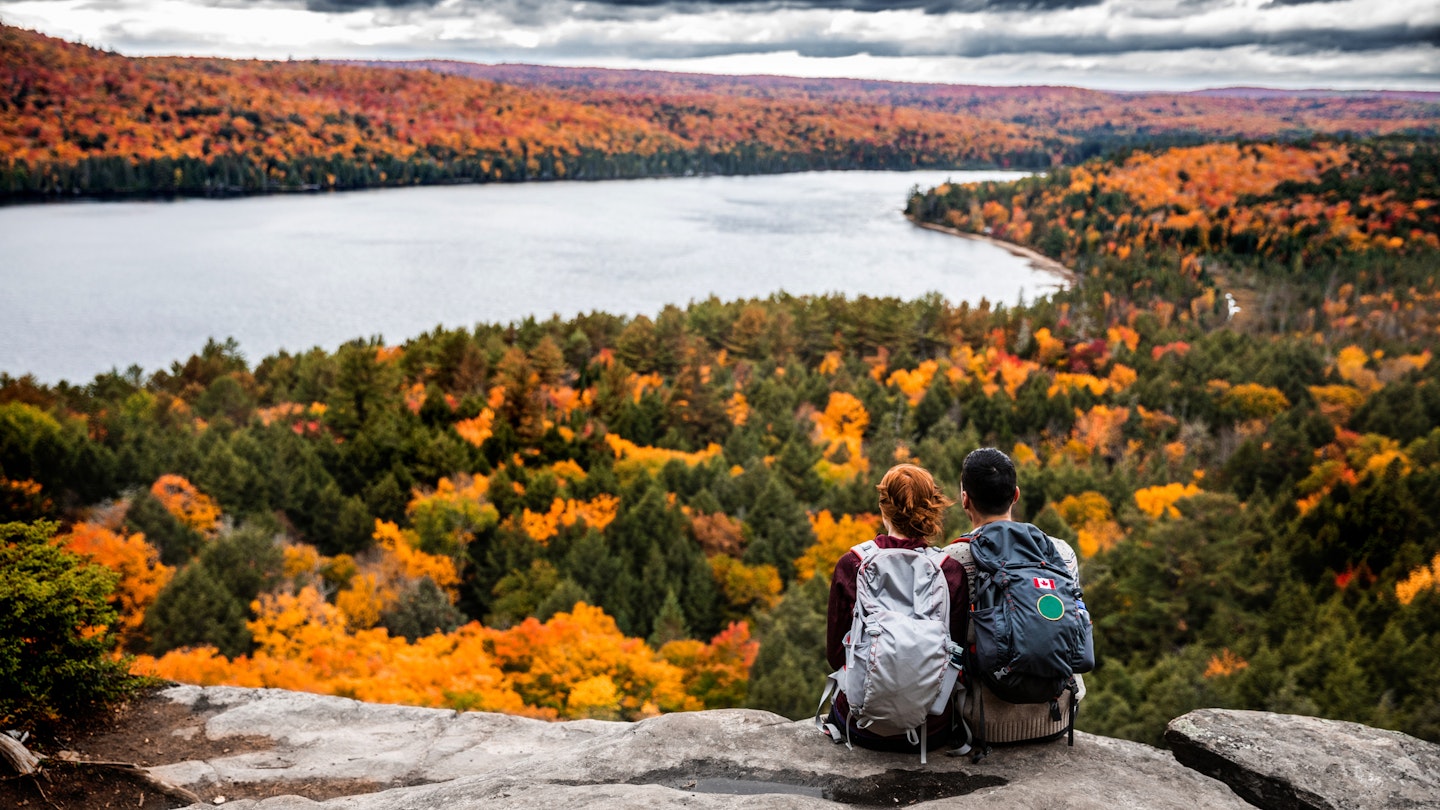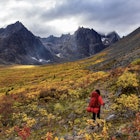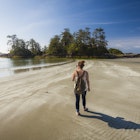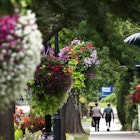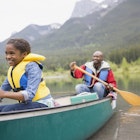A life-long fan of destinations that revolve around spending time in the water, Lonely Planet writer Isabella Noble recently returned from a restorative trip to Algonquin Provincial Park in Ontario. Here, she shares a snapshot of her time spent swimming, canoeing, hiking, sunset-gazing, wildlife-spotting, and more.
During the hot and humid 2023 summer in Toronto, my Canadian partner and I hopped in a hire car and headed around 300km (186 miles) north across Ontario. Just a few hours later, I was cooling off with a swim in a glassy lake, with bright-green pine-and-maple forests stretching for as far as you could see into the distance beneath a bright-blue, cloud-flecked sky – a classic scene in serene, wildly beautiful Algonquin Provincial Park.
With 7600 sq km (2900 sq miles) of forested wilderness and thousands of tree-rimmed lakes and interconnected waterways, Canada’s oldest provincial park offers a taste of the country’s immense natural beauty within comparatively easy reach of Toronto and Ottawa (both around three hours’ drive away). This area is the traditional land of the Indigenous Algonquin people, who lived here for centuries before Europeans arrived, often traveling by water on birch-bark canoes.
Though I’ve usually visited in summer, Algonquin is also a joy for its spectacular fall colors, springtime wildlife-watching (especially moose) and even snowy adventures during winter. Whilst I was here for a four-day trip, I’d recommend staying as long as you can.
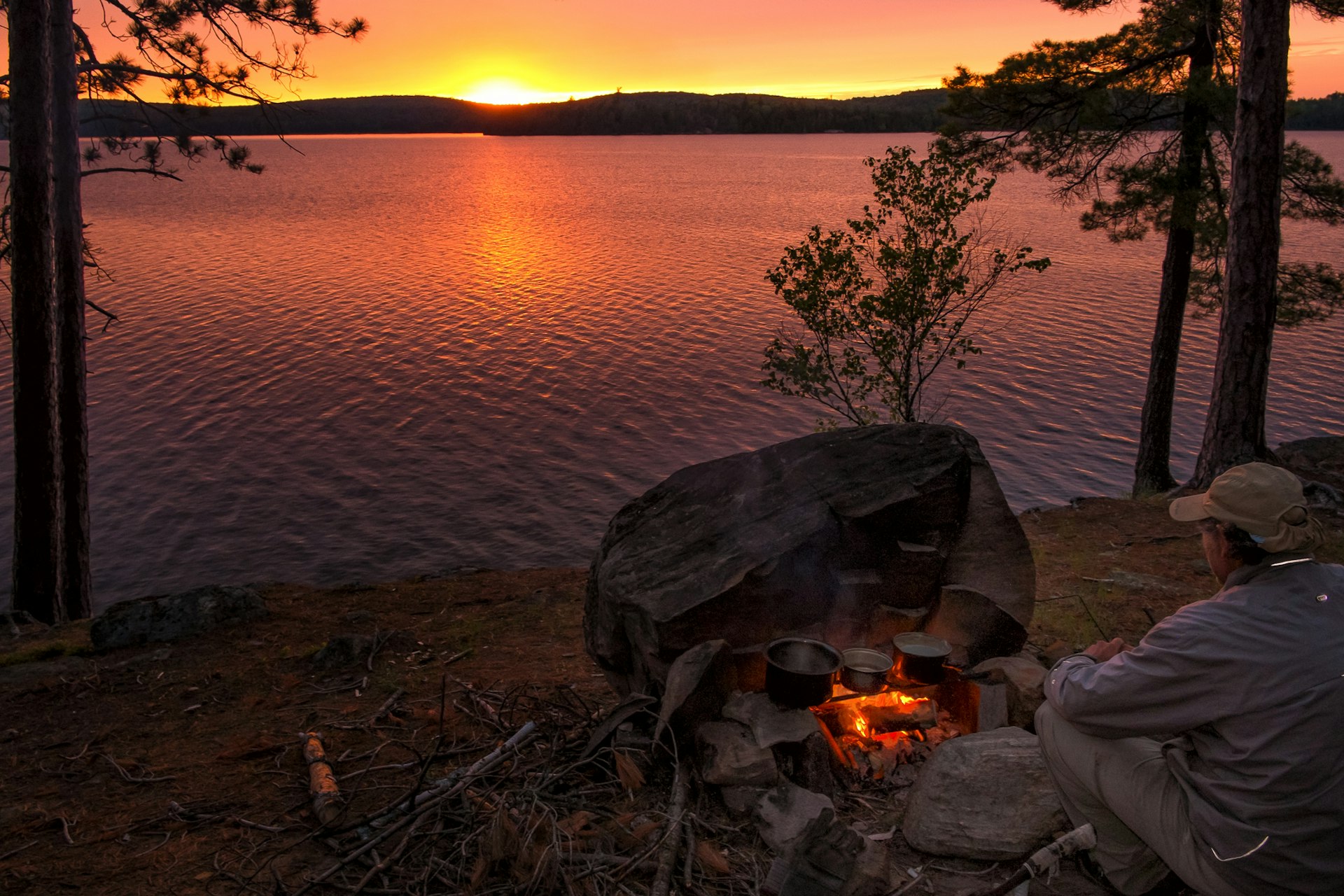
Where did you stay? What was the vibe?
Apart from a handful of cozy lodge-like hotels, most Algonquin accommodation involves camping. We stayed at the lovely Canisbay Lake Campground, just off Hwy 60 at the south end of the park, where car-accessible sites are dotted among a calm, light-sprinkled deciduous forest that ripples inland from a silver-sand shoreline. Each campsite has its own bench-style seating and a fire pit for cooking; we brought our own tent, tarp and food supplies. Apart from a day’s overlap with a busy long weekend (skip those if you can), it was a wonderfully peaceful place. Starting each day with a swim in the sparkling lake off one of the tiny forest-fringed beaches was magical.
Most campsites in Algonquin run from mid-May to late October, though Mew Lake stays open year-round. You’ll want to book as far ahead as possible as the most popular spots get snapped up quickly.
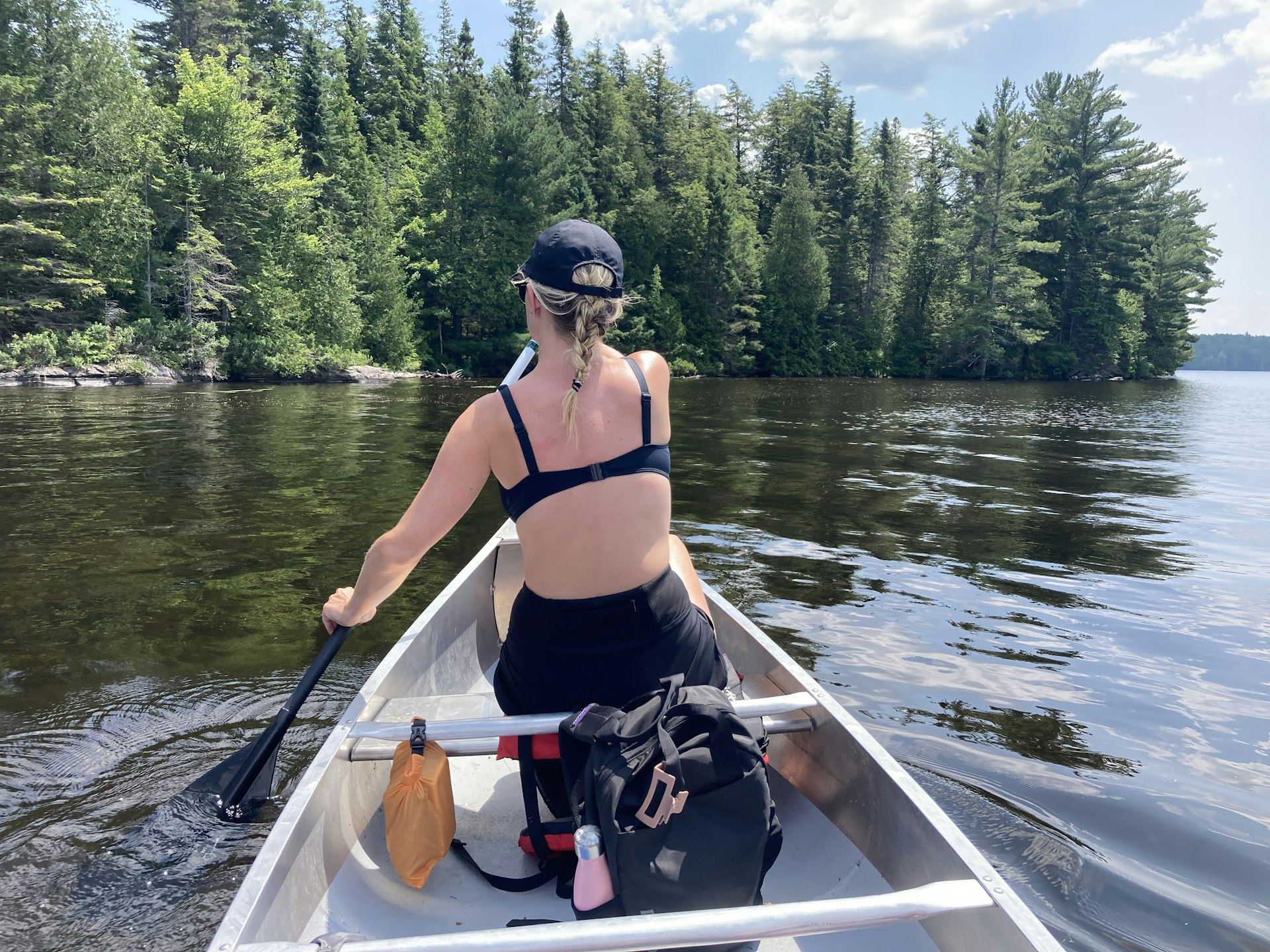
Favorite activity from the trip?
With almost 2400 lakes sprinkled across the vast park, Algonquin is all about getting out on the water. You're paddling past towering white pines, spotting loons diving beneath the surface and – in the warmer months – taking plenty of breaks somewhere beautifully secluded to swim in the inky water. For this trip we hired a canoe from long-running Algonquin Outfitters and set off for the day across Canoe Lake, which has a few cottages dotted along the waterfront. The lake was also a favorite spot for the beloved Canadian artist Tom Thompson, who painted Algonquin often and sadly drowned here while out canoeing in 1917; you can see many of his landscape-focused oil paintings and sketches at both Toronto’s Art Gallery of Ontario and Ottawa’s National Gallery of Canada.
To really escape it all, the ultimate Algonquin experience is a multi-day canoe-camping trip through the backcountry, which has around 1900km (1180 miles) of canoeing routes – next time!

What’s your favorite photo from the trip and where was it taken?
Catching the sunset blazing a million shades of pink, peach and orange over the lakes before fading into the trees each day is an Algonquin treat. This photo was taken down on the waterfront as the evening calm descended over Canisbay Lake; a few savvy kayakers still lingered out on the water and there was the odd loon paddling around, but the whole place felt blissfully calm. No matter where you end up staying, find a lake at sunset and you’ll instantly understand why Algonquin has inspired Canadian artists for years.
What was the most under-the-radar activity you enjoyed?
People come to Algonquin for the glinting lakes and rich wildlife, but there’s also some great hiking here, with around 140km (87 miles) of marked walking paths to explore. We headed out along the Centennial Ridges Trail, one of Algonquin’s most rewarding day-walk routes – a 10.4km (6.5-mile) loop combining shady forests, craggy escarpments, lakes shaped by beaver dams and rolling views across the endlessly color-changing forest canopy. Despite visiting during the summer, we had this hushed trail almost entirely to ourselves; spotting a family of otters splashing around in a river far below the cliffs was an unforgettable highlight.
A few years ago, on a previous Algonquin trip, I hiked the spectacular 7.5km (4.6-mile) Track & Tower Trail, which follows a disused railway for part of the route. Tackling the trails can also be an easy way to sidestep the crowds if you happen to be here during a busy time.

Best tip for someone who wants to plan the same trip?
Part of Algonquin’s beauty is how it takes on a different energy depending on when you visit, even from one month to the next. For vibrant fall colors (yellow-orange poplars, fiery-red sugar maples), plan your trip for between early September and mid-October; mid-September is usually the big 'wow' moment each fall. The best time for moose-spotting is spring (particularly May–June), when these majestic creatures linger in low-lying wet areas after the long winter. If you’re into winter adventure sports, come for snowshoeing and cross-country skiing from around November to March.

